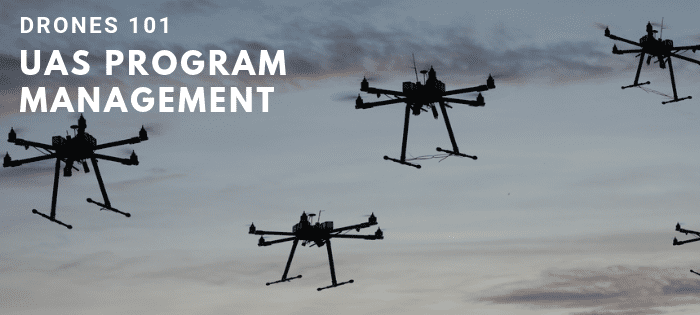
Drones 101: UAS Program Management
This is the fourth article in Kestrel’s Drones 101 series.
Drones can reduce risk in commercial operations, but it is important to acknowledge that they can also introduce risk through damage to property, safety incidents, loss of UAS assets, and legal and regulatory issues. And without a planned, organized UAS program, your risks increase significantly.
Why UAS Programs Fail
Why do some drone programs fail? Both large and small companies can establish safe and reliable drone programs, but a solid foundation early in the process is essential for success. Lack of planning will (at best) add up to a short-lived drone program or (at worst) cause your company undue risk or injury.
In short, buying and operating UAS equipment without a plan in place can lead to:
- Sunk costs
- Delayed success
- Safety incidents
- Service delays
- Employee injury
- Loss of financial backing legal and regulatory issues
Foundations of a Drone Program
A solid, sustainable UAS program starts with consideration of a handful of essential elements, as discussed below.
Financial Resources. Your program needs to consider cost. Not only will you need to create a budget for approval, but you will want to be aware of and able to accurately communicate costs and have a basis for arriving at a return on your investment. A good approach is to categorize your costs into one-time capital costs; recurring costs related to equipment, software and pilots; and costs for expansion.
 Incidentally, the cost to take the Part 107 Airmen Knowledge Test is $150 per attempt. A prep course online will run about $200 -$300. To stay current, pilots are required to take a test every two years, which also costs $150 per attempt
Incidentally, the cost to take the Part 107 Airmen Knowledge Test is $150 per attempt. A prep course online will run about $200 -$300. To stay current, pilots are required to take a test every two years, which also costs $150 per attempt
The key point is to understand your costs, budget for them, and put the drone program in the best position to be funded as needed.
Cross-Functional Strategy
Ideally, you want a team of people with different functional expertise working toward the common goal of helping the company achieve the benefits associated with a drone program. Consider involving individuals in program management, operations management, legal/compliance, human resources, information technology, and others.
Depending on how large your organization is, the team may be one or two individuals who wear many hats and juggle responsibilities. Larger organizations may expand the size and functions beyond this example. Think about how your organization might function:
- Is your program manager and operations manager the same person?
- Which of the following is the highest priority for your legal team: data security, regulatory compliance, or employee safety?
- Do you have the in-house IT resources to support the technical needs of a UAS program?
You don’t necessarily have to have a large team, but you do need to consider how you’ll cover all the related functions and responsibilities.
UAS Program Operations Manual
A UAS program operations manual – whether it is a paper binder or an online resource – is a must. It’s important that you have well thought-out policies and procedures, standard practices, and emergency plans. It is just as important that all your pilots and team members are familiar with them, so everyone is operating from the same playbook.
Your operations manual should lay out expectations and company-approved applications of UAS technology. In general, it should include the following:
- Policies, procedures, standard operating practices, safety programs
- Identified risks, hazards, and emergency situations; mitigation measures
- Data management and documentation requirements
- How/when to verify federal and state regulations for UAS technology
- Employment terms/contracts (employee, contractor, vendor)
Integrated Systems
Much like the cross-functional team we just covered, your internal business systems should include drone program-related tasks and subsystems. These should be integrated into the normal flow of business in your organization.
If your company operates under an ISO-style management system (e.g., ISO 9001, ISO 140001, or ISO 45001), you have the opportunity to align and integrate systems with your existing program and take advantage of the plan-do-check-act cycle associated with ISO management systems. Consider systems for communication, inventory management, data management, employee management, and technical support, among others.
Measurable Goals
It’s a standard exercise in any management system to set measurable goals and track progress against them. The same standard should be upheld for drone program management. Setting metrics and evaluation methods will allow you to show the value of your UAS program.
- First, set goals for the drone program overall. This may include:
- UAS pilot effectiveness (e.g., safety, training status, reportables, compliance)
- Effectiveness of policies and procedures
- ROI of the UAS program (e.g., money saved, time saved, fewer injuries, lower workers compensation rates)
- Second, set goals to measure the impact of the drone program on your core business.
- How will UAS enhancements change/improve existing company performance metrics?
- For example, can you move from biannual inventory of resources to quarterly due to ease of inspections? Or monitor high-risk bridges, wind turbines, etc. every 3 months?
- Set or adjust thresholds based on the knowledge you gain from UAS enhancements.
Plan for Continuous Improvement
Finally, you should have a plan for continuous improvement. An effective plan will follow the classic management system plan-do-check-act cycle to drive improvement in not only the drone program, but in the core business as well.
In the diagram below, drone program goals related to improved policies and procedures lead to standard operations practices. The effectiveness of these actions is evaluated, gaps are identified, and additional goals are set. As an example, let’s say one of those policies and procedures is to address how we manage flight data. A goal is set, the procedure is examined, previously unidentified risks are discovered, and mitigation measures are put in place in the policies, procedures and SOPs.
 Key Takeaways
Key Takeaways
Drones can enhance your current business operations by reducing the time and safety risks involved with routine tasks, but they bring with them their own operational and regulatory considerations. To help ensure your drone program’s success:
- Establish a solid foundation early.
- Establish policies and procedures to reduce inefficiencies and ensure compliance.
- Create systems to reliably track the location, status, and condition of your drone fleet – regardless of size.
- Establish systems to track and manage the training and certification status of all employees or contractors in the UAS program.
- Monitor and manage maintenance and repairs/replacements of the drone fleet to reduce operational risks of drone failure during flight and to ensure that employees are operating their drones safely and efficiently.
- Develop systems to manage and organize huge quantities of data from drone flights so you can easily find footage/stills and leverage the data gathered.
- Design and implement integrated software systems to prevent liabilities, loss of ROI, and safety risks.
Learn more about Kestrel’s UAS Program Management services. Be sure to check out the entire Drones 101 series:
- Terminology & Technology
- Applicability
- Regulations
- Drone Program Management
- Top 6 Tips for Managing Your Drone Program

Drones 101: Regulations for sUAS
This is the third article in Kestrel’s Drones 101 series.
Drone usage is regulated by the Federal Aviation Administration (FAA). In 2016, FAA issued new rules for non-hobbyist (i.e., commercial) small Unmanned Aircraft System (sUAS) operations in 14 CFR Part 107. Part 107 covers a broad spectrum of commercial uses for drones weighing less than 55 pounds at time of takeoff and landing.
Commercial vs. Hobby
For the purposes of Part 107, commercial is considered as anything except recreational or hobby use. Whether you are making money directly with your drone or just using it as a tool within your company, Part 107 applies to drone pilots and drones used for business purposes.
Operating Requirements
Many of the rules in Part 107 are common sense; others are not. This list provides an overview of the operating requirements for complying with Part 107:
- The remote pilot must keep the drone within visual line of sight (VLOS) at all times.
- The operator should always avoid manned aircraft.
- Neither the pilot nor a visual observer can be responsible for more than one sUAS at a time.
- You are only allowed to fly during daylight hours. If you attach the proper anti-collision lighting, you may conduct operations during twilight hours. Night operations are prohibited without proper authorization from the FAA.
- Minimum weather visibility is three miles from your control station.
- Maximum allowable altitude is 400 feet above the ground (higher if your drone remains within 400 feet of a structure, such as when you inspect a tower or tall building).
- Maximum speed is 100 mph (87 knots).
- You cannot fly directly over any people unless they are directly and knowingly involved in the operation.
- You can carry an external load if it is securely attached, does not adversely affect the flight characteristics or controllability of the aircraft, and maintains the weight limit of 55 lbs. at time of takeoff and landing.
- The National Airspace System is divided into several categorizations and it is imperative that all UAS operators know and understand the various airspace designations.
- Operations in Class A are prohibited unless authorizations from the FAA are secured and the operators coordinate their operation through air traffic control. sUAS operations in Class A airspace is extremely unlikely due to the altitude.
- Class B and Class C airspace designations surround all major and minor airports. Operations in Class B and Class C airspace require prior authorization from the FAA, which can be difficult to obtain. Certain exceptions are made and, in the event that operations are approved in either of these airspaces, coordination with air traffic control and/or airport operator is required.
- Class E airspace resides between the top limits of all the other airspace designations and the bottom of Class A airspace. Class E airspace can also be found around non-towered airports with instrument approach requirements and can require air traffic control or airport operations coordination during hours when the tower is operational. This varies, and operators should refer to their sectional maps and flight planning tools before every flight to verify their current airspace requirements.
- Class G airspace does not require any additional approvals for operations; a majority of commercial UAS operations occur within these areas.
- Airspace designations can change, and temporary flight restrictions are frequently established for various reasons. Operators should always refer to their sectional maps and flight planning tools before, during, and after all UAS operations.
You can request a Certificate of Waiver from certain Part 107 regulations, and/or authorization to operate in restricted airspace by submitting a request directly to the FAA. There are tools that can help with this process, but waiver requests can be complicated, and most are not approved by the FAA. Kestrel can help you write effective waivers.
Low Altitude and Notification Capability (LAANC)
For access to restricted airspaces that are at low altitudes (under 400 feet), operators can use a new tool recently released by the FAA referred to as LAANC (Low Altitude Authorization and Notification Capability). LAANC aims to provide near real-time airspace authorizations for UAS operations under Part 107.
LAANC automates the application and approval process for airspace authorizations at nearly 300 air traffic facilities covering approximately 500 airports. It dramatically decreases the wait time experienced with the manual authorization process, provides greater flexibility in operational planning, and directly supports UAS integration into the airspace.
Pilot Certification
To operate a sUAS under Part 107, pilots need a remote pilot airman certificate with a small UAS rating or must be under the direct supervision of a person who holds such a certificate. This certification entails passing a two-hour Airmen Knowledge Test to become certified, and then applying for your certificate online, which includes passing a TSA background check. Operators must retake the Airmen Knowledge Test every two years to stay current.
If you already have a Part 61 pilot certificate, other than a student pilot certificate, you must have completed a flight review in the previous 24 months and you must take a sUAS online training course provided by the FAA. Pilots receive a certificate of completion, which must be renewed every 24 months.
If you are acting as pilot in command, you must:
- Make your drone available to the FAA for inspection or testing on request, and provide any associated records required to be kept under the rule.
- Report to the FAA within 10 days any operation that results in serious injury, loss of consciousness, or property damage (to property other than the UAS) of at least $500.
Drone laws and regulations are constantly evolving as the industry evolves.
. As an example of the ever evolving regulations, effective February 25, 2019 the FAA now requires that all sUAS display their aircraft registration number on an external surface of the aircraft. This rule was established under 14 CFR Part 48. Additional rules regarding night operations and flights over people are in the proposed rule phase and are expected to become effective by the end of April. In addition, record retention laws are forthcoming for drone footage and may vary by state.
Not surprisingly, pilots can unknowingly (and easily) violate FAA regulations. One very important task as part of your overall UAS program management strategy should be to keep current on pilot certifications, drone registrations, and regulatory changes to remain compliant.
Learn more about Kestrel’s UAS Program Management services. Be sure to check out the entire Drones 101 series:
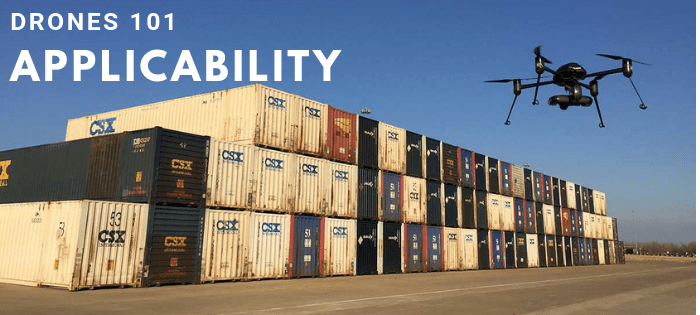
Drones 101: Applicability
This is the second article in Kestrel’s Drones 101 series.
As we move into this important new phase of everyday use of drone technology in the workplace, some questions may arise:
- How many drones are there operating in commercial space?
- Where are they being used?
- How are they being used to help operations?
Commercial Drone Operation
The chart below illustrates actual data from FAA’s aerospace forecast from this year. It highlights the phenomenal growth in drone use. The FAA projects that the commercial drone fleet is set to grow from over 110,000 in 2017 to over 450,000 by 2022 using its base, or most likely numbers. FAA’s high-end estimate predicts over 700,000 commercial drones in use by 2022. The number of remote pilots (indicated by the blue dotted line) is set to increase from 73,673 in 2017 to over 301,000 by 2022.
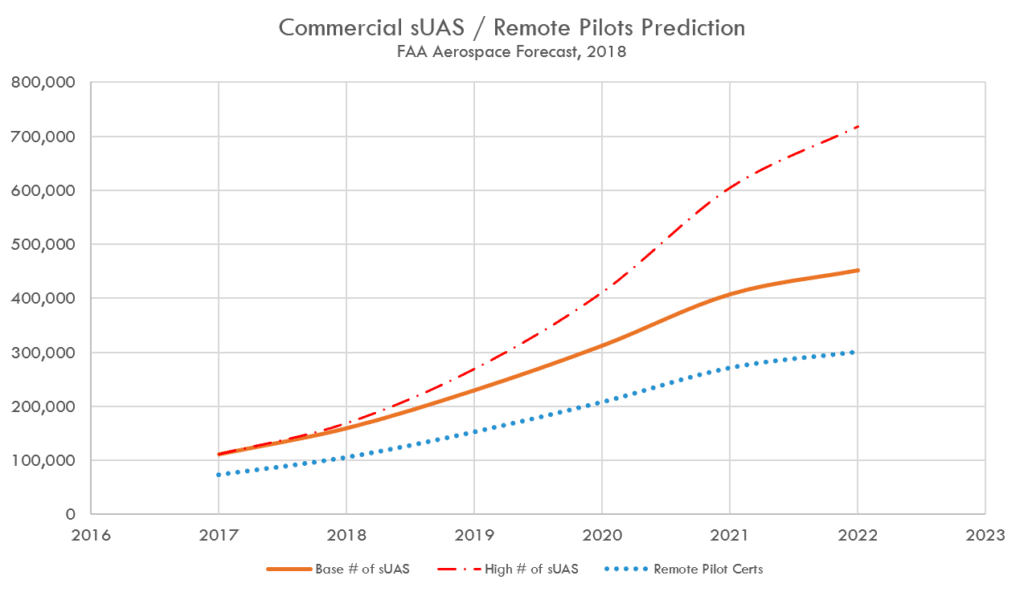 Further, the map below shows the distribution of registered commercial drones in the U.S. in 2017. The larger dots indicate a higher number of drones registered in that area. From this information you can see that commercial drones are popular and in use all over the country, not just in isolated pockets.
Further, the map below shows the distribution of registered commercial drones in the U.S. in 2017. The larger dots indicate a higher number of drones registered in that area. From this information you can see that commercial drones are popular and in use all over the country, not just in isolated pockets.
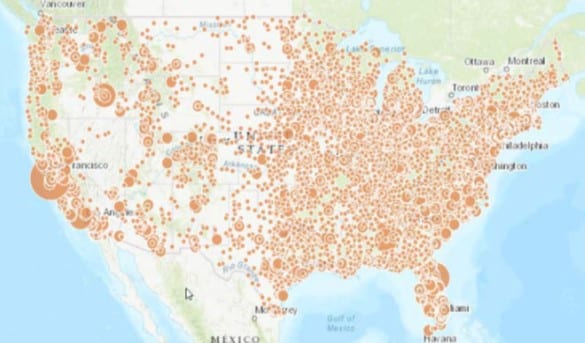 Typical Uses of Commercial sUAS
Typical Uses of Commercial sUAS
This pie chart from the FAA shows in a general sense how commercial drones are being used in the U.S. By far the most common use is aerial photography and mapping, followed by industrial inspection and agriculture. Insurance and state & local governments round out the chart. Construction is not represented separately on this chart, but it has been identified as the fastest growing industry segment in terms of drone use.
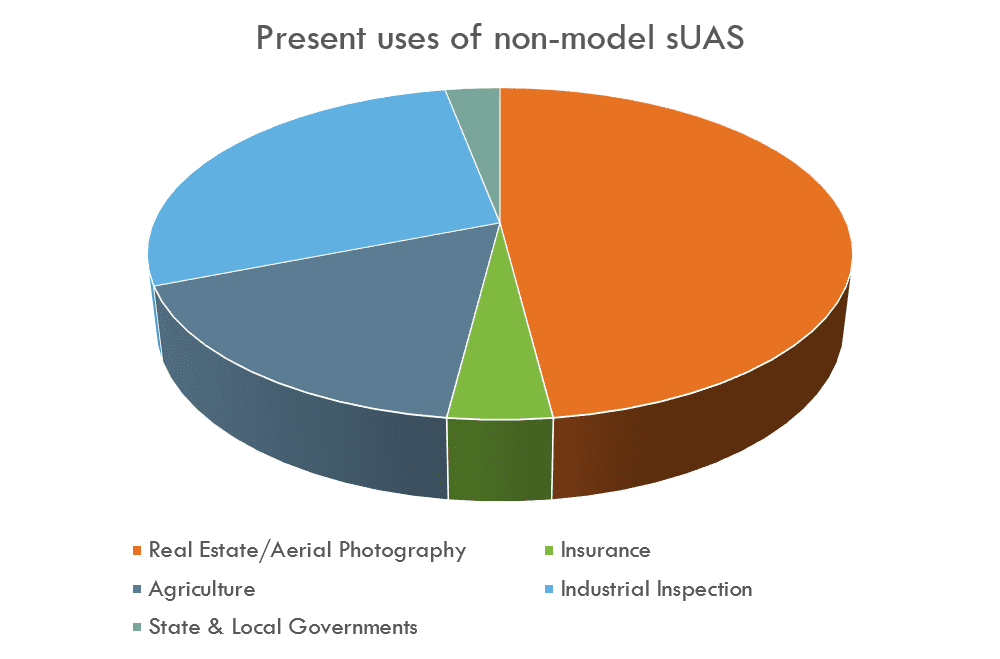 Why Drones?
Why Drones?
Using drones in commercial settings can clearly save time and money in many different ways, including the following:
- Outputs from drone applications can provide support, such as 3D modeling of existing facilities, evidence for insurance or legal claims, or cause-finding efforts for incident investigations.
- Drones can also be used to objectively monitor changes over time, such as erosion control, flood rise and water damage, or the rate of deterioration of fixed outdoor assets like tanks and towers.
- Sensors and software designed for drones offer quick, convenient means to measure stockpile volumes and inventories, evaluate flood plains, or quantify spills.
- Data captured can be used proactively to anticipate environmental risks, indicate preventive maintenance needs, or inform everyday decision-making.
- Drones can quickly and accurately determine stockpile volumes, which is very useful in the mining and aggregate industries.
- Finally, one of the most important uses of drones is to reduce employee exposure to hazardous conditions. These might include working at heights, confined spaces, or any situation where there is a risk of injury or death.
Drone Applications in Action
Let’s take a look at two examples of drones in action.
Application 1: Cause Finding.
Drones are being used across various industries to enhance cause-finding efforts. These tools are especially useful when hazardous materials or conditions are involved, and when the assets involved are on fire, at height, or pose a high safety risk to those involved.
One example of this is railroad derailment prevention. Standard derailment prevention operations involve derailment cause-finding efforts, such as interviewing those involved, walking the site and taking photos by hand and at eye-level. Derailment sites for large Class I railroads can be well over a mile long and can include spilled hazardous materials or active fires depending on the severity of the incident. Inspecting these sites can be time consuming, risky and, since these events are always unplanned, they can be disruptive to those involved.
Using drones, companies have been able to fly a derailment site in a fraction of the time it would have taken a person or persons to walk the entire site. With a LiDAR unit attached to the drone, companies scan the site and, using the data points generated during data collection efforts, recreate the accident scene to scale back at home base. This technology allows for more advanced analytics to be run on the incident. By recreating the accident scene using the data gathered by the drone and an appropriate software package, companies have been able to pinpoint the exact reasons that a train has derailed.
In one such instance, a company was able to determine that one of its trains was loaded in such a way that the push and pull being placed on the couplers was stressed to the point of breakage after the train went over and down a section of undulating territory at a certain speed. The company was able to analyze the degree of the undulation, the relative age of the coupler(s) involved, and the exact moment and location of the derailment. By digitally reconstructing the scene, they could see exactly which part of the train began to wobble, why it became unsteady and what caused the trajectory observed at the derailment site. With the application of UAS technology, the company was able to turn these detailed insights into multiple proactive and response mitigation actions.
Application 2: Industrial Inspection.
Drones are being used at processing and manufacturing plants to identify faults and aid in predicting required maintenance on equipment. In certain applications, specially designed drones are flown into hazardous and confined spaces instead of sending workers in.
One example of the latter is the periodic internal inspection of a large industrial boiler at a mine in Utah. Typically, this is accomplished by installing scaffolding down the middle of the boiler so that a team of technicians can climb down and observe specific features looking for cracking and signs of wear. What is normally a week-long process is now done in half a day with a confined space drone, and literally saves hundreds of thousands of dollars, because production is shut down for hours instead of days.
At another tank farm, UAS operators set waypoints to fly the same route periodically to check for irregularities and deterioration on the tanks, as well as evidence of releases from tanks and piping. This allows for proactive repairs and more efficient maintenance efforts. With a thermal imaging camera attached to the drone, the operator can perform a rough visual level check on the tanks to confirm that individual level sensors on the tanks are performing as expected, so that product inventories are accurate.
Enhancing Operations
There are many ways that drones can be used to enhance operations, regardless of industry. Drones offer a tool to access and assess physical conditions, minimize risks, and enhance employee efficiency during job tasks that are otherwise routine/time consuming, difficult to accomplish (i.e., have a high safety risk, exposure to hazardous materials that could result in injury or death), challenging to reach/excessively large (i.e., working at heights or in confined spaces), or time-sensitive.
When implemented appropriately, using drones often results in a solution that is:
- Faster – Significantly reduce manhours to complete work (e.g., inspections, audits, monitoring) without requiring plant shutdown.
- Safer — Eliminate the need for humans to complete high-risk activities (e.g., climbing towers, entering confined spaces, inspecting disaster zones).
- More accurate — Gather comprehensive and reliable data with less room for human error and less variability.
Learn more about Kestrel’s UAS Program Management services. Be sure to check out the entire Drones 101 series:
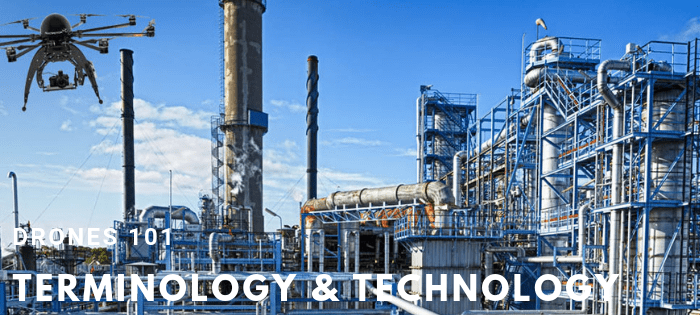
Drones 101: Terminology & Technology
This is the first article in Kestrel’s Drones 101 series.
Industries like transportation, manufacturing, utilities, mining, construction, oil and gas, and agriculture are crucial to our country’s infrastructure, particularly in a rapidly changing global market. Yet these industrial sectors continually face the challenges of an aging workforce and high-risk job tasks, including exposure to moving freight cars, high-voltage transmission lines, and hazmat materials and risks of slips, trips, falls, maiming and premature death.
Emerging Technology
Fortunately, drones are an emerging technology that offers a solution both to the shrinking workforce and as an additional mitigation tactic for various operational safety needs of heavy industries.
What was once a very niche market, drones are emerging into an important new phase: everyday use of drone technology in the workplace. It’s no longer just tech-savvy companies that are using drones. Enterprise-level Unmanned Aerial System (UAS) operations are becoming a big deal in industry. Organizations ranging from municipalities and agriculture companies to the Fortune 500s are getting involved in drone operations.
In another three to five years, it will potentially make business sense for nearly every major industrial company to incorporate UAS technologies into their operations for two reasons:
- Drones are effective at both mitigating risks and increasing operational efficiency.
- Drones are a tool that can bolster workforce recruitment and retention efforts.
Terminology & Technology
As drones become more popular and the industry continues to grow, newer and more varied versions of them are hitting the market, making it difficult to keep up with the technology and the related terminology.
If you’ve observed or read anything about drones, you may have noticed a few acronyms thrown around, and that can be a little confusing. Some of the most common terminology includes the following:
- Drone is used to define just about any type of Unmanned Aerial Vehicle (UAV). The term refers to many different types of an unmanned aircraft of various sizes, which are used for multiple functions, ranging from armed forces aircraft to hobbyists taking amateur digital photography.
- Unmanned Aerial Vehicle (UAV) refers to the platform, airframe, or body of the craft you are flying. The term can be used interchangeably with drone.
- Unmanned Aerial System (UAS) includes the vehicle or aircraft, the controller, and the link(s) that connect them. A small Unmanned Aerial System (sUAS) is a UAS weighing less than 55 pounds at takeoff and landing.
It is best practice to use UAS in formal documents like policies and procedures. If you have a diverse approach that includes both light and heavy drones, then specifying whether a document pertains to sUAS or UAS operations would be optimal, as the regulations vary based on weight, and your operational policies and procedures would need to reflect this.
Types of UAS
While there are variety of drone technologies on the market, the three main types of UAS available in the commercial space are the following:
- Multi-rotor UAS is the most popular drone type for both commercial use and for hobbyists. This type of drone is typically less difficult to operate. They offer vertical take-off and landing and the ability to hover, both of which can result in highly detailed data points and targeted insights. Quad-, hexa-, and octo-copters are all available (i.e., 4, 6 or 8 rotors). There are a number of typical use cases of multi-rotor drones, including industrial inspections, aerial mapping, site planning and monitoring, cause finding, resource management, crop spraying and many more.
- Fixed-wing UAS function more like an airplane than their multi-rotor counterpart. These drones often resemble small airplanes or mechanical stingrays. They consist of two fixed wings on either side of the craft. This design provides for more efficient aerodynamics and longer flight times (~45-60 min per flight). Fixed-wing have high aerial coverage (up to 2,400 acres per flight) but offer less detailed imagery, are typically unable to hover, and are more suited for covering large areas of land, resulting in large data sets with less detail than you would collect using a multi-rotor or a hybrid UAS. These drones require a suitable runway area for takeoff and landings and are usually able to carry heavier payloads than other types of UAS. Typical uses include beyond visual line of sight (BVLOS) operations, photogrammetry and 3D mapping, crop inspections, and other tasks that require significant area coverage.
- Hybrid UAS are gaining popularity, as these platforms offer the benefits of a vertical takeoff and landing and the ability to fly quickly in a forward motion to cover larger areas of land, while still having the ability to hover. Hovering allows for close-up inspections and produces more detailed information than a quick fly by. Hybrids range in their load carrying capability. Hybrids can be used in many of the same ways as fixed wings and multi-rotors but are most excitingly known for their use in delivery services and unmanned air taxi applications.
Payloads
In addition to the drone itself, there are many types of payloads, which is a generic term for the cameras, sensors, or other equipment that can be attached to and carried by drones:
- Specialized cameras are the most often used payloads for drones.
- Various cameras offer the ability to gather higher resolution images with greater detail.
- LiDAR units can be attached to gather data points from any work site, which can then be translated into 3D-modeling efforts to aid in volumetric applications.
- Thermal/infrared cameras provide heat sensing capability.
- Gas detection cameras detect fugitive gas leaks at pipelines and tanks.
- Multispectral and hyperspectral sensors are electromagnetic energy sensors that offer insight into details on resources that would otherwise be invisible to the human eye.
- Environmental sensors (e.g., chemical sensors) can measure chemical compositions and traces of particular chemical substances, including radioactive particles and particulate matter.
Undoubtedly, the types of drones and the payloads will continue to expand as the market and applicability of drones continues to grow.
Learn more about Kestrel’s UAS Program Management services. Stay tuned for the rest of our Drones 101 series, featuring:
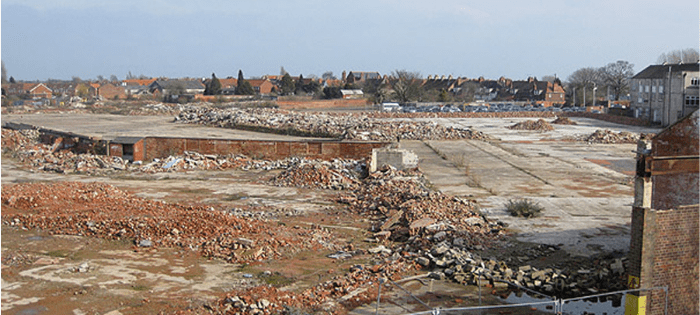
Comments: No Comments
Environmental Liability Management
Cost-effective management of environmental liabilities is a challenge for any organization, but it is particularly challenging for those companies with a large portfolio of liabilities at varying stages of maturity. The complexity of liability management is increased even more for those organizations adhering to generally accepted accounting practices (GAAP), which apply additional requirements to the process. Ultimately, the goal of liability management is to create a reliable system that enables the company to minimize risk and quickly drive projects to closure with as little expenditure of internal and external resources as possible.
The manner in which a liability is accounted (and managed) is based largely on the liability itself and the available information. Environmental liabilities are typically managed as either loss contingencies or asset retirement obligations (AROs). A company may also decide to address certain environmental liabilities as operating expenses or capital expenditures. Regardless, companies should employ a cross-functional team (i.e., finance, law, operations, and EHS departments) to establish and document a repeatable and defensible process—consistent with applicable GAAP standards—for how the liability will be managed. Further, companies should develop standard procedures that define how and when costs associated with the liabilities are estimated.
Environmental Loss Contingencies
An environmental loss contingency represents the cost to remediate an environmental liability where:
- It is probable that the liability has occurred, and
- The cost can be reasonably estimated.
The GAAP for loss contingencies is established in Accounting Standards Codification (ASC) 450-20. In very general terms, environmental loss contingencies include environmental investigations and remediation that are not the result of normal operations and that are generally triggered by a regulatory agency action or order.
As stated, the goal of loss contingency management is to create a system to cost-effectively minimize risk and quickly drive projects to closure, while keeping in mind the ultimate outcome of enabling future final use options to return the property to productive and valuable use without rebound liability.
Lifecycle Costs of Remediation
While the most significant cost of a remediation project is typically the expense of the remediation itself, the overall lifecycle cost of a project can be impacted significantly by the following:
- How efficiently a project moves from stage to stage (milestones) and, ultimately, to closure. Many projects get stuck at some point along this path, often significantly increasing the overall project lifecycle cost. Maintaining project velocity through each milestone can keep costs in check.
- The project team’s understanding of critical aspects of the Conceptual Site Model (CSM) before remedies are selected and implemented. Often, projects jump to a remedy—particularly interim remedies—before there is a clear understanding of the CSM (i.e., constituents of concern (COCs), pathway, receptors), resulting in premature or only partial remediation.
- Failure to address all risks associated with a site. This can include physical risks associated with buildings, foundations, and other historical operating structures and equipment.
- The project team’s understanding of the designed project end point. A periodic assessment of the end point of a project is vital to aligning stakeholders and ensuring that all efforts are directed toward the desired outcome. As data and information are collected on a project, it is sometimes necessary to reset the project strategy toward an alternative end point.
- How efficiently and effectively the project team communicates critical project information for decision making. A portfolio-based approach establishes a standard way of communicating project activities, schedule, and budget. This allows for more efficient communication between critical internal stakeholders (e.g., legal, public relations, real estate, and senior management) and with external consultants/advisers.
Portfolio-Based Management Model
There are several key elements to developing an effective portfolio-based management model, including those described in the sections below.
Standard Project Milestones
Controlling a large number of ongoing site remediation projects requires establishing a series of standard project milestones (i.e., project progressions) and associated work subtasks. This standardization establishes a common language and sets the framework for developing common subtasks for project budgeting and scheduling.
A milestone structure for remediation projects would typically include the items listed below. This structure can be adapted to projects where certain impacts to groundwater or soils can move at different velocities through project milestones.
- Project startup: Early project activities that typically include records review, strategy development, regulatory agreement negotiations, etc.
- Preliminary site investigation: Initial data gathering to assess the nature and extent of the impacts; may end with a Remedial Investigation Report (RIR)
- Site characterization and risk assessment: Complete characterization of the site to develop a CSM based on COCs, pathways, and receptors, and to identify physical aspects of the site that must be addressed as part of the project
- Feasibility study: Assessment of alternative remedial options
- Final design: Post-regulatory approved remedy design
- Implementation and OM&M: Remedy implementation and ongoing operation, maintenance, and monitoring
- End point: The targeted point for each project when all work necessary to eliminate the risk has been conducted or the point when no further work will result in additional risk mitigation
Standardized Work Breakdown Structure
For each of the milestones, a common set of subtasks is established to facilitate the development of detailed project workplans and for schedule and cost tracking. These subtasks ensure that workplans consider all the activities required to complete the work and allow for standardization across projects.
Having standardized project milestones and subtasks creates an additional benefit in that they can be used to create a more consistent and documented method for estimating contingent liability under ASC 450-20. By developing lifecycle cost estimating rules for each milestone, a company can ensure that its projects are using a common estimating logic (i.e., known and estimable) for determining the cost of investigation, design, and remedy implementation. A similar process could also be developed to ensure common estimating standards are applied to AROs ASC 410.
Project Control and Change Management
One common flaw in remediation projects is the tendency to enter into interim remedies or to identify a remedy that is not supported by data. This often results in incomplete remedies being implemented or remedies being installed that are not tied to a clear end point.
Developing standard project workplans allows for efficient project control and change management. As work progresses through milestones, data and information emerge to help identify a data-driven set of alternative remedies or a presumptive remedy. The disciplined progression of a project through milestones prevents projects from jumping to a preferred remedy without supporting data.
In addition, periodic review meetings—a key project control—create touch points to:
- Review all aspects of the project’s scope, schedule, and budget
- Test the validity of the end point
- Emphasize the continued forward momentum of the project
Centralized Project Database
Implementing a centralized database, such as Kestrel’s liability and asset management tools, to house all project workplans and other key documents provides another valuable project control. The central project database becomes the real-time repository for project information. Functionality includes the following:
- An internal database for tracking project scope, schedule, and budget for projects in a web-based workplan format
- Exportable workplans for use outside the database
- Password-protected access of the system to allow consultants to see only their projects and company staff to see all projects
- Front-end dashboard to allow senior management to monitor key project activities/status at a glance
- Ability to store key documents for each project
- Customizable project information page that houses project information (e.g., key contacts, project details, COCs, involved media)
- Customized project reports and summaries
- Ad hoc query capability
Periodic Project Reviews
Despite all good intentions, projects (particularly complicated ones) can drift off track or hit dead ends. When these situations occur, Integrated Site Reviews (ISR) can keep projects progressing to the appropriate end point.
A formal ISR can include an external facilitator for larger, more complex projects or be adapted by the project team for smaller projects. An ISR typically follows these steps to validate the project’s direction or to reset a new direction:
- An ISR team is formed consisting of a cross-functional group of stakeholders that could include the consultant, legal, internal environmental manager, real estate, operational staff, and other outside experts. Pulling together all stakeholders ensures that there is alignment and agreement on the selected end point.
- The ISR team meets (typically for no longer than a day) and goes through a structured review of technical, regulatory, legal, and third-party project drivers.
- Depending on the stage of the project, a blue sky set of alternative end points is identified.
- The alternative end points are developed, discussed, and evaluated.
- In the end, the current end point is either validated or a new end point is developed.
- All necessary changes to the project workplan are made.
Companies can respond to the challenge of managing contaminated properties by either internally staffing up to provide day-to-day oversight of the projects or by outsourcing the projects to a consultant, who can efficiently execute the project and serve as the public face. Whichever route a company decides to take, following the key elements described above will allow for effective portfolio-based management that will reach the desired end points.
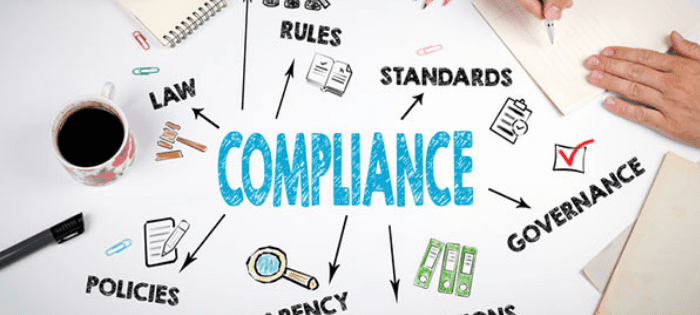
Comments: No Comments
How to Effectively Resource Compliance Obligations
Regulatory enforcement, customer and supply chain audits, and internal risk management initiatives are all driving requirements for managing regulatory compliance obligations. Many companies—especially those that are not large enough for a dedicated team of full-time staff—struggle with how to effectively resource their regulatory compliance needs.
Striking a Balance
Using a combination of in-house and outsourced resources can provide the appropriate balance to manage regulatory obligations and maintain compliance.
Outsourcing provides an entire team of resources with a breadth of knowledge/experience and the capacity to complete specific projects, as needed. At the same time, engaging in-house resources allows the organization to optimize staff duties and ensure that critical know-how is being developed internally to sustain compliance into the future.
Programmatic Approach to Compliance Management
Taking a balanced and programmatic approach that relies on internal and external resources and follows the three phases outlined below allows small to mid-size companies to create standardized compliance management solutions and more efficiently:
- Identify issues and gaps in regulatory compliance
- Achieve compliance with current obligations
- Realize improvements to compliance management
- Gain the ability to review and continually improve compliance performance
Phase 1: Compliance Assessment
A compliance assessment provides the baseline to improve compliance management and performance in accordance with current business operations and future plans. The assessment should answer the following questions:
- How complete and robust is the existing compliance management program in comparison with standard industry practice?
- Does it have the capability to yield consistent and reliable regulatory compliance assurance?
- What improvements are needed to consistently and reliably achieve compliance and company objectives?
It is important to understand how complete, well-documented, understood, and implemented the current processes and procedures are. Culture, model, processes, and capacity should all be assessed to determine the company’s overall compliance process maturity.
Phase 2: Compliance and Program Improvements
The initial analysis of the assessment forms the basis for developing recommendations and priorities for an action plan to strengthen programs, building on what already exists. The goal of Phase 2 is to begin closing the compliance gaps identified in Phase 1 by implementing corrective actions, including programs, permits, reports, training, etc.
Phase 2 answers the following questions:
- What needs to be done to address gaps and attain compliance?
- What improvements are required to existing programs?
- What resources are required to sustain compliance?
Phase 3: Ongoing Program Management
The goal of Phase 3 is to improve program processes to eliminate compliance gaps and transition the company from outsourced compliance into compliance process improvement/program development and implementation. This is done by managing the eight functions of compliance—identifying what’s needed, who does it, and when it is due. Ongoing maintenance support may include periodic audits, training, management review assistance, Information Systems (IS) support, and other ongoing compliance activities.
Case Study
For one Kestrel client, business growth has increased at a rate prompting proactive management of the company’s regulatory and compliance obligations. Following a Right-Sized Compliance approach, Kestrel assessed the company’s current compliance status and programs/processes/procedures against regulatory requirements. This initial assessment provided the critical information needed for the Kestrel team to help guide the company’s ongoing compliance improvements.
Coming out of the onsite assessment, Kestrel identified opportunities for improvement. Using industry standard program templates, in combination with operation-specific customization, Kestrel created programs to meet the identified improvement from the assessment. Kestrel then provided onsite training sessions and is working with the company to develop a prioritized action plan for ongoing compliance management.
Using the appropriate methods, processes, and technology tools, Kestrel’s programmatic approach is allowing this company to implement EHS programs that are designed to sustain ongoing compliance, achieve continual improvements, and manage compliance with efficiency through this time of accelerated growth.
Making the Connection
Kestrel’s experience suggests that the connection between management and compliance needs to be well synchronized, with reliable and effective regulatory compliance commonly being an outcome of consistent and reliable program implementation. This connection is especially important to avoid recurring compliance issues.
Following a programmatic approach allows companies to realize improvements to their compliance management and:
- Organize requirements into documented programs that outline procedures, roles/responsibilities, training requirements, etc.
- Support management efforts with technology tools that create efficiencies and improved data management
- Conduct the ongoing monitoring and management that are vital to remain in compliance
- Gain the inherent capacity, capability, and maturity to comply, review, and continually improve compliance performance

Comments: No Comments
Compliance Assurance Review
An audit provides a snapshot in time of a company’s compliance status. An essential component of any compliance program—health and safety, environmental, food safety—an audit captures compliance status and provides the opportunity to identify and correct potential business losses. But what about sustaining ongoing compliance beyond that one point in time? How does a company know if it has the processes in place to ensure ongoing compliance?
Creating a Path to Compliance Assurance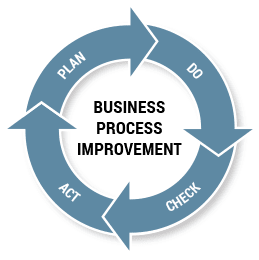
A compliance assurance review looks beyond the “point-in-time” compliance to critically evaluate how the company manages compliance programs, processes, and activities, with compliance assurance as the ultimate goal. It can also be used as a process improvement tool, while ensuring compliance with all requirements applicable to the company.
This type of review is ideal for companies that already have a management system in place or strive to approach compliance with health and safety, environmental, or food safety requirements under a management system framework.
Setting the Scope
The scope of the review is tailored to a company’s needs. It can be approached by:
- Compliance program/topic where the company has had routine compliance failures
- Compliance program/topic that presents a high risk to the company
- Compliance program/topic that spans across multiple facilities that report to a central function
- Location/product line/project where the company is looking to streamline a process while still ensuring compliance with multiple legal and other requirements
While each program, project, or location may differ in breadth of regulatory requirements, enforcement priorities, size, complexity, operational control responsibilities, etc., all compliance assurance reviews progress through a standard process that ties back to the management system.
Continual Compliance Improvements
Through a compliance assurance review, the company will define and understand:
- Compliance requirements and where regulated activities occur throughout the organization
- Current company programs and processes used to manage those activities and the associated level of program/process maturity
- Deficiencies in compliance program management and opportunities for improvement
- How to feed review recommendations back into elements of the management system to create a roadmap for sustaining and continually improving compliance
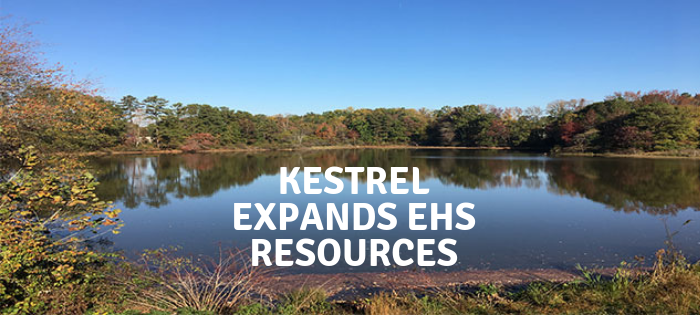
Kestrel Expands EHS Resources
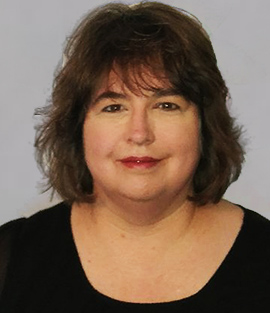 An environmental and safety compliance leader with over 20 years of corporate, academic, and government experience, Becky Wehrman-Andersen has joined Kestrel as a Senior Consultant, based out of Des Moines, Iowa. Becky has hands-on experience in chemistry safety, regulatory compliance, hazardous waste management, emergency response, training, compliance assessments, EPA negotiations, and biological and chemical sciences.
An environmental and safety compliance leader with over 20 years of corporate, academic, and government experience, Becky Wehrman-Andersen has joined Kestrel as a Senior Consultant, based out of Des Moines, Iowa. Becky has hands-on experience in chemistry safety, regulatory compliance, hazardous waste management, emergency response, training, compliance assessments, EPA negotiations, and biological and chemical sciences.
Becky has particular expertise in hazardous waste management, hazardous waste site assessments, special waste identification and permitting, complex hazardous pharmaceutical disposal strategies, emergency response, risk identification and technical support. She is an expert in chemical risk management and environmental compliance, and has exceptional experience as an expert witness and in negotiating EPA and DNR penalty reduction. Further, Becky is adept in safety program management, training, and market development consultation. She is a professional speaker/trainer with extensive experience in training on the technical aspects of EPA, OSHA, and DOT compliance and chemical risk minimization, and is a North American Hazardous Materials Managers (NAHMMA) and Solid Waste Association of North America (SWANA) certified trainer.
Read Becky’s complete bio for more information.
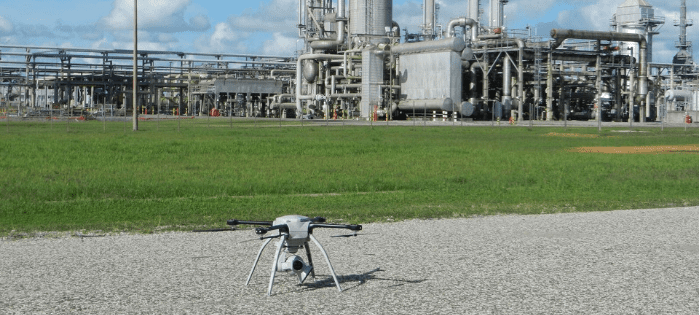
How to Succeed with & Scale a Drone Program
Talk about starting an Unmanned Aerial System (UAS) (a/k/a “drone”) program is happening at companies of all sizes, but establishing the right foundations to ensure these kinds of programs don’t fail is far less pervasive. At DJI AirWorks 2018, Kestrel Consultant, Industrial UAS Programs, Rachel Mulholland’s presentation, “Bringing Your Drone Program to Scale: Lessons Learned from Going Big” laid out what it means to achieve success and avoid failure with the technology.
Commercial UAV News recently caught up with Rachel to further discuss her presentation, which focused on UAS applications for infrastructure, explored why UAS programs fail, and detailed the foundations of a successful drone program. In the published interview, she details some of her lessons learned from out in the field, what it means to deal with positive and negative assumptions people have about the technology, why it is so important to have a UAS Program Operations Manual, and much more.
Read the full interview in Commercial UAV News, and learn more about Kestrel’s UAS Program Management services.
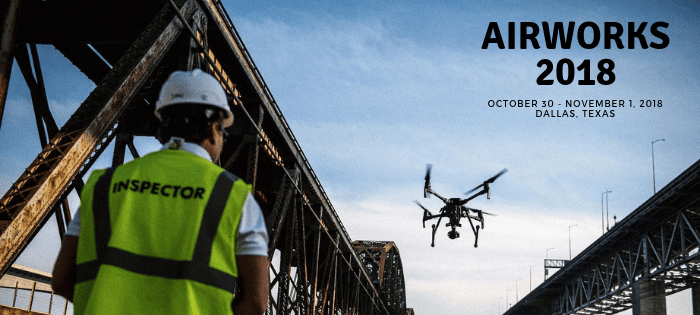
Comments: No Comments
Kestrel to Present at AirWorks 2018
The AirWorks 2018 Conference is focused on the growing commercial drone industry and how developers, partners, and operators can work to reshape the global economy with drones. This year, Kestrel Management will be teaming with Union Pacific Railroad to talk about our experience and lessons learned from managing industrial-scale drone programs.
AirWorks 2018
October 30 – November 1, 2018
Dallas, Texas

Kestrel Presentation: Bringing Your Drone Program to Scale: Lessons Learned from Going Big
Thursday, November 1 at 11:00 a.m.
Rachel Mulholland, Kestrel Management Consultant, Industrial UAS Programs
Edward Adelman, Union Pacific Railroad, General Director of Safety
This presentation will discuss the risks and opportunities associated with building an industrial drone program and share some of the lessons learned from our experience. We’ll discuss common questions, including the following:
- What does it take to build an industrial drone program?
- How can UAS technology fit into your current business model?
- What challenges can occur with fleets of certified remote pilots and unmanned vehicles?
- How do you ensure you operate in compliance with FAA regulations?
- What are some common pitfalls to avoid and best practices to incorporate into your program?
Why You Should Attend
If you currently have a drone program or are looking to implement one, this event is for you!
- Attend sessions focused on the industry track most relevant to your business: construction, energy, agriculture, public safety, infrastructure
- Network with companies that are on the forefront of enterprise drone adoption
- Get a preview of the latest drone technologies
- Receive hands-on training from experienced industry leaders and instructors
